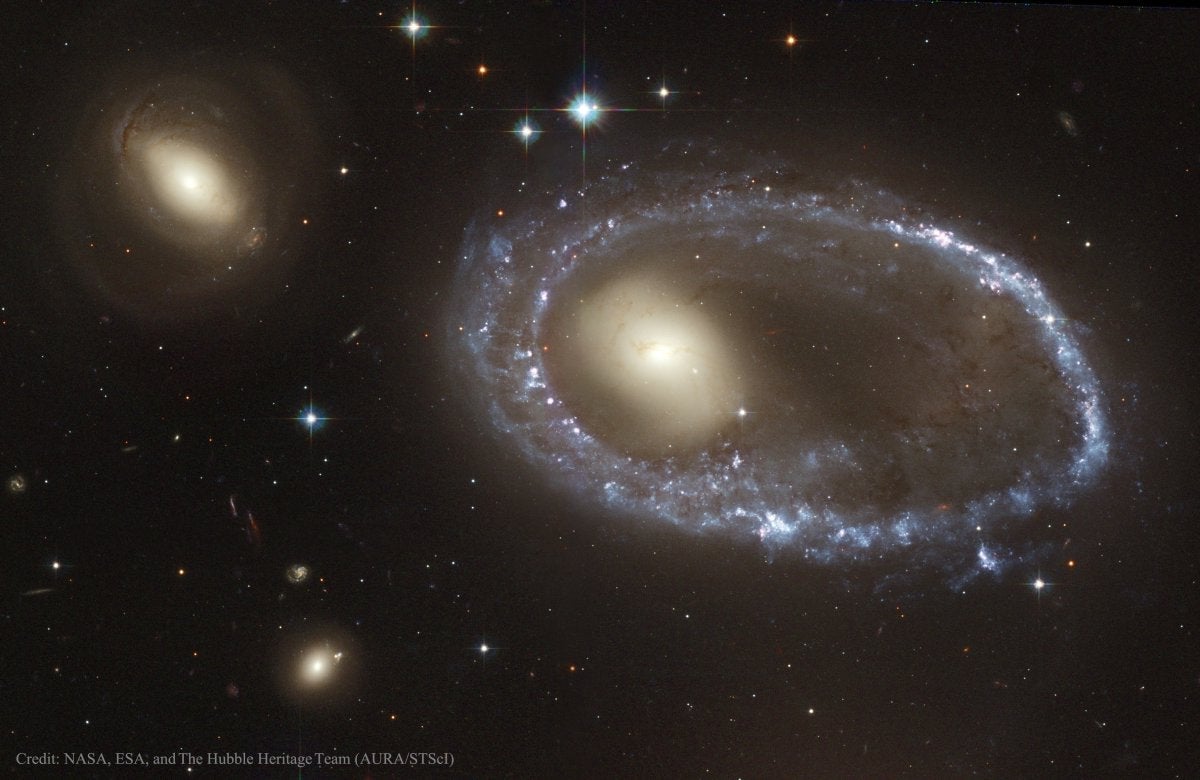The most iconic photos captured by the 25-year-old Hubble space telescope
The Hubble space telescope turned 25 today. In the past two and half decades, it has given us spectacular images of the universe, which had remained hidden to the human eye. On this momentous occasion, here are some of the best photos shot by Hubble, along with the distance at which those objects exist from Earth.
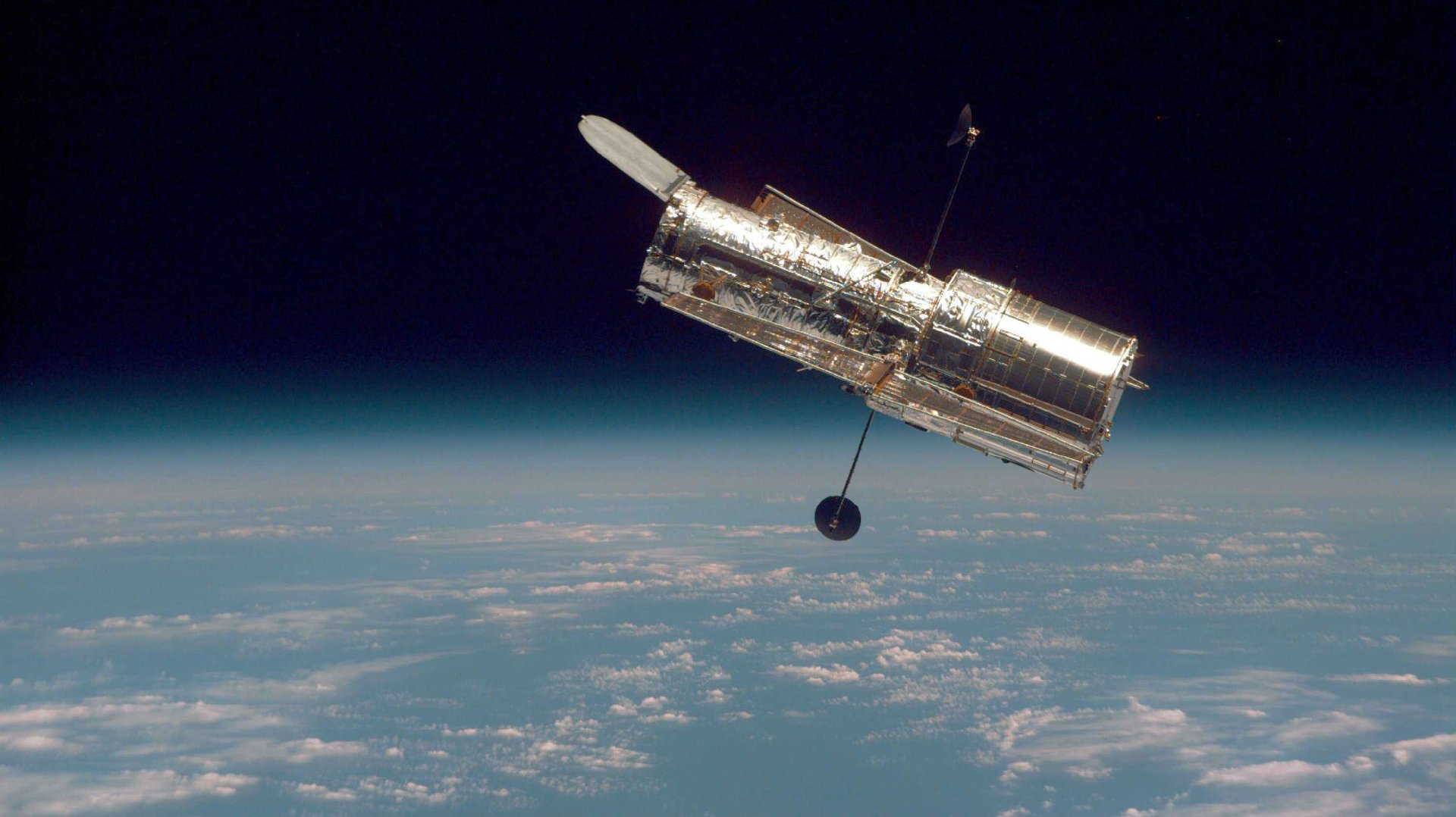

The Hubble space telescope turned 25 today. In the past two and half decades, it has given us spectacular images of the universe, which had remained hidden to the human eye. On this momentous occasion, here are some of the best photos shot by Hubble, along with the distance at which those objects exist from Earth.
Westerlund 2 star cluster – 20,000 light-years
For the 25th anniversary NASA released a picture of the Westerlund 2 star cluster that the telescope shot. The image shows an expanding shell of gas lit up by the radiation from a cluster of 3,000 stars at its center.
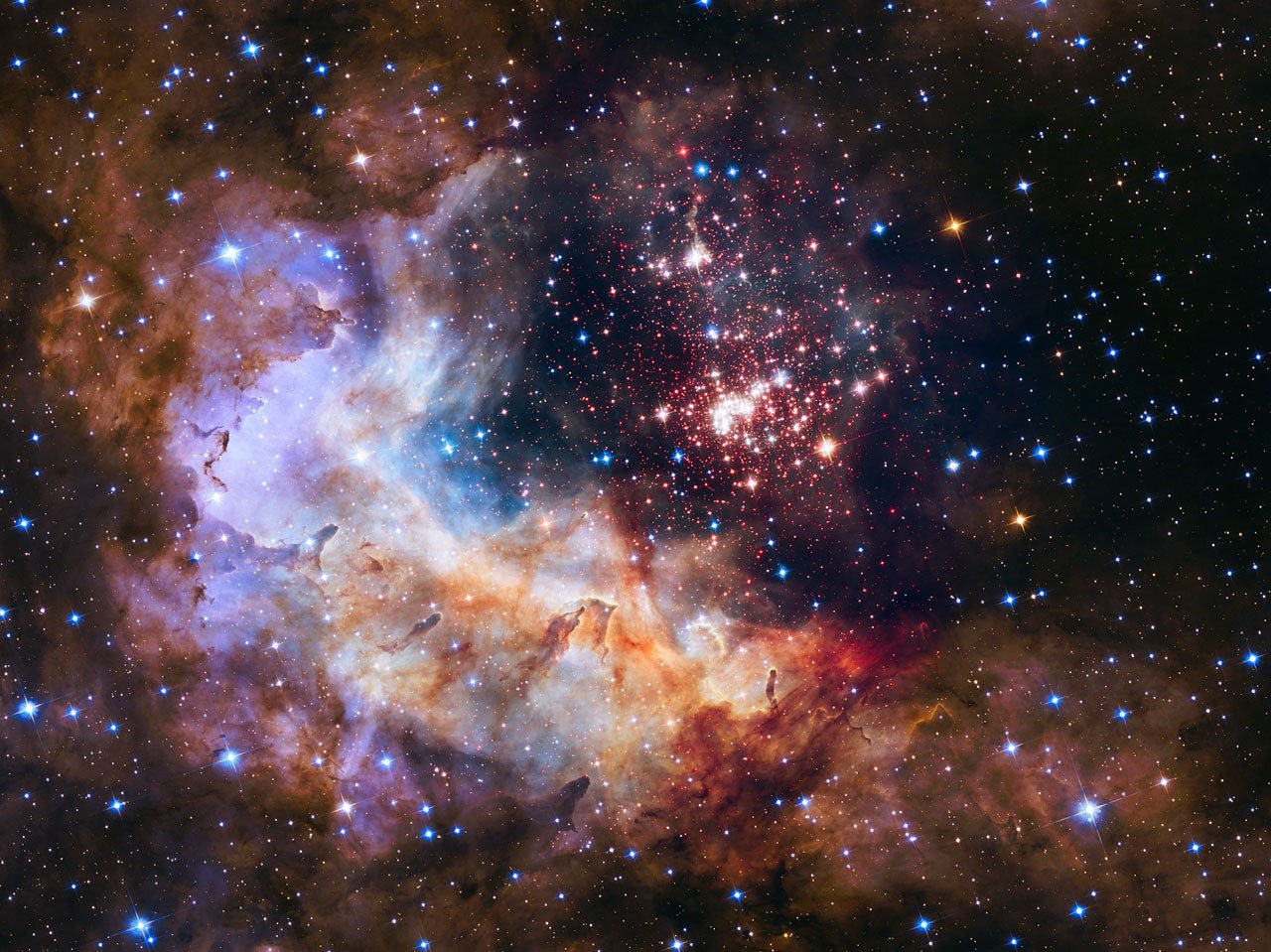
Pillars of Creation – 6,500 light-years
This was the first shot by Hubble in 1995, and it is arguably the telescope’s most iconic snap. The pillars are four-light-year long columns of gas and dust blown outward by a cluster of energetic stars in the Eagle Nebula, and they’re also nursing young stars within themselves.
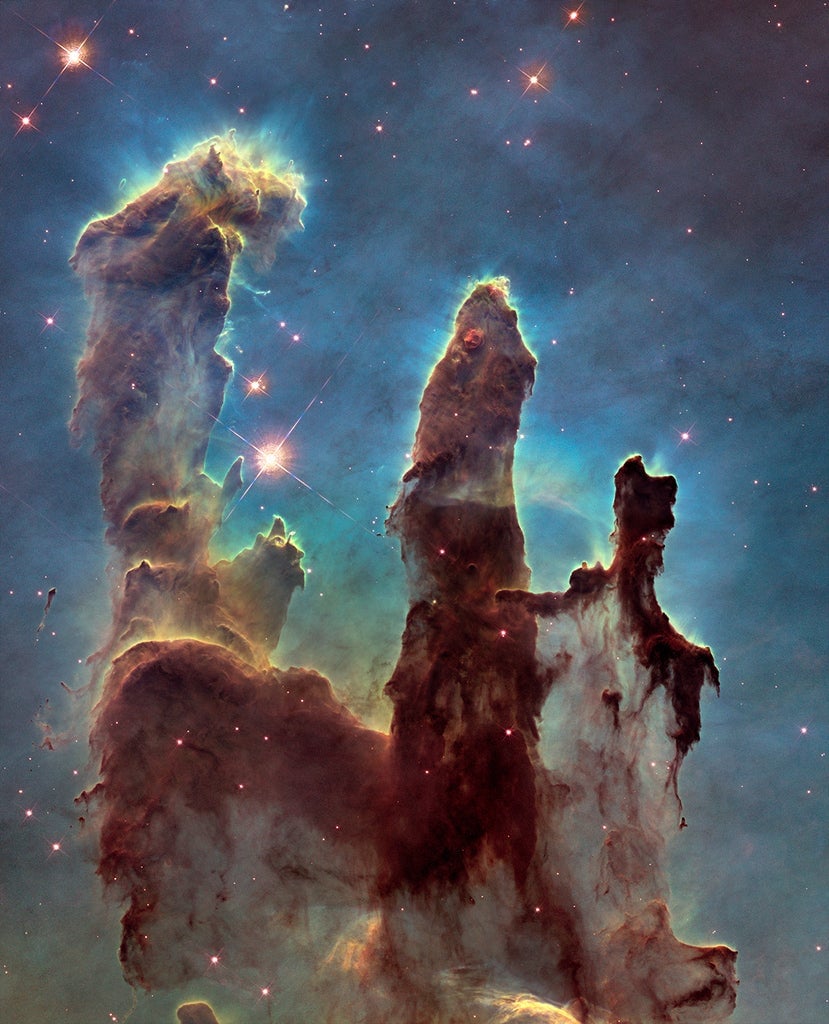
Sombrero Galaxy – 28 million light-years
Known and named for its resemblance to the Mexican hat, the Sombrero Galaxy is quite the looker for its nearly side-on appearance in this picture and for the beautiful halo enveloping it. It also has a noticeably pronounced dust-lane rimming its circumference. Like the Milky Way, the galaxy is thought to house a large black hole at its center.
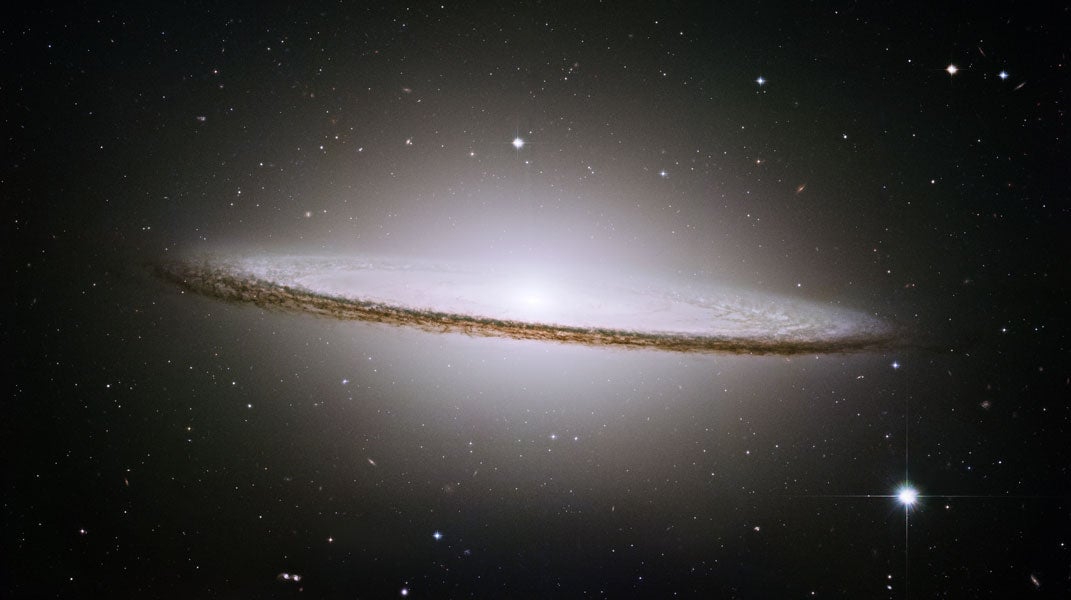
Horsehead Nebula – 1,500 light-years
In the stupendous sequence of graphics depicting the origins of life in the universe in Terrence Malick’s Tree of Life, the Horsehead Nebula makes an appearance presumably because, like the Pillars of Creation, it’s an object made famous by Hubble’s snaps of it. Though its contours bear a distinct resemblance to the head of a horse, they will be eroded in a few million years by the radiation from a nearby massive star, Sigma Orionis.
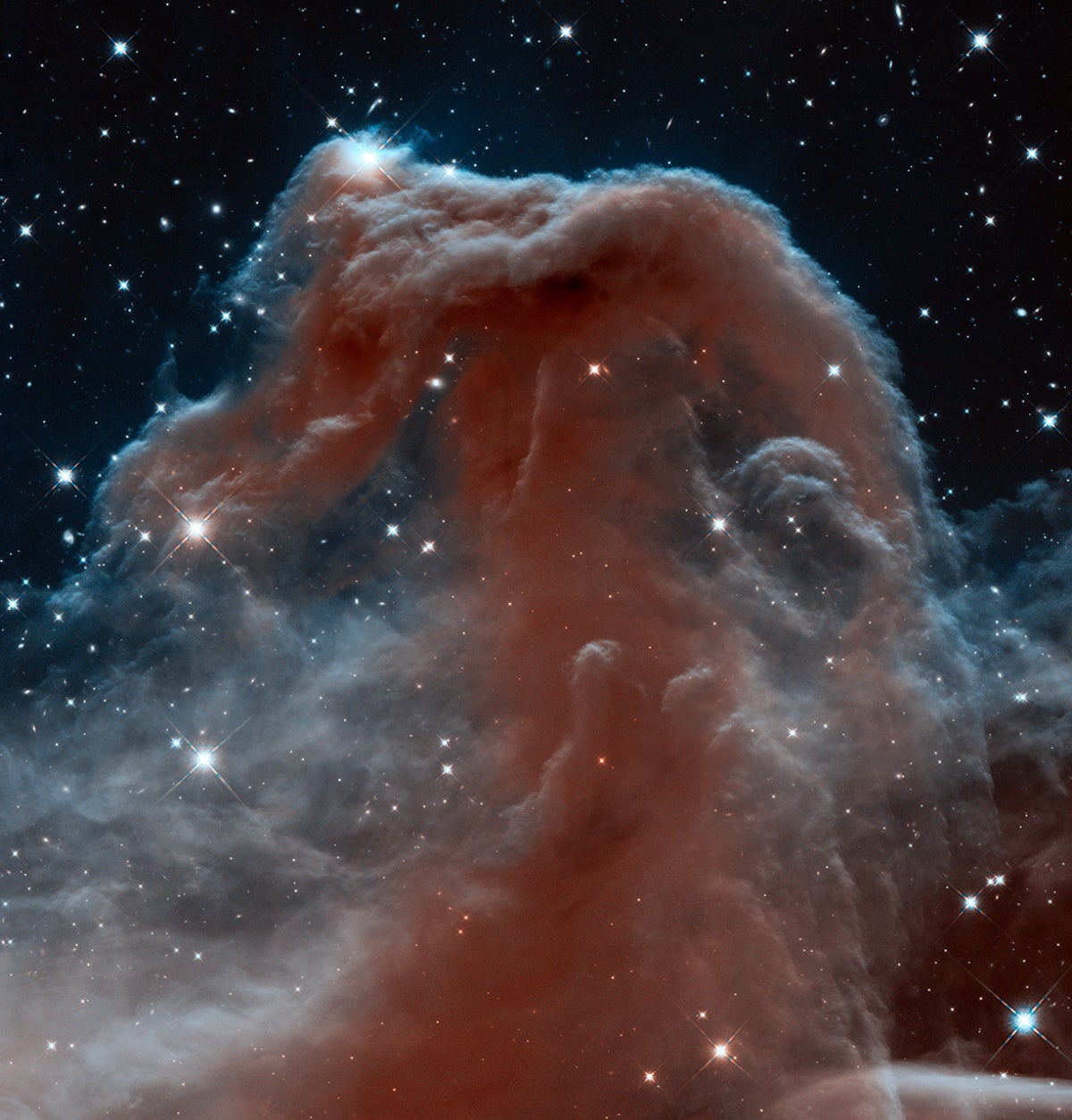
Butterfly Nebula – 2,100 lightyears
The Butterfly Nebula is actually a planetary nebula, a misleading name that stuck to identify the violent expulsion of its uppermost layers by a dying star. In between the two “wings” of irradiated gas is a torus of dust 10-times as wide as the orbit of Pluto. At its center is a pair of stars, one of which is the dying star causing its surrounding to heat up to 250,000 degrees Celsius.
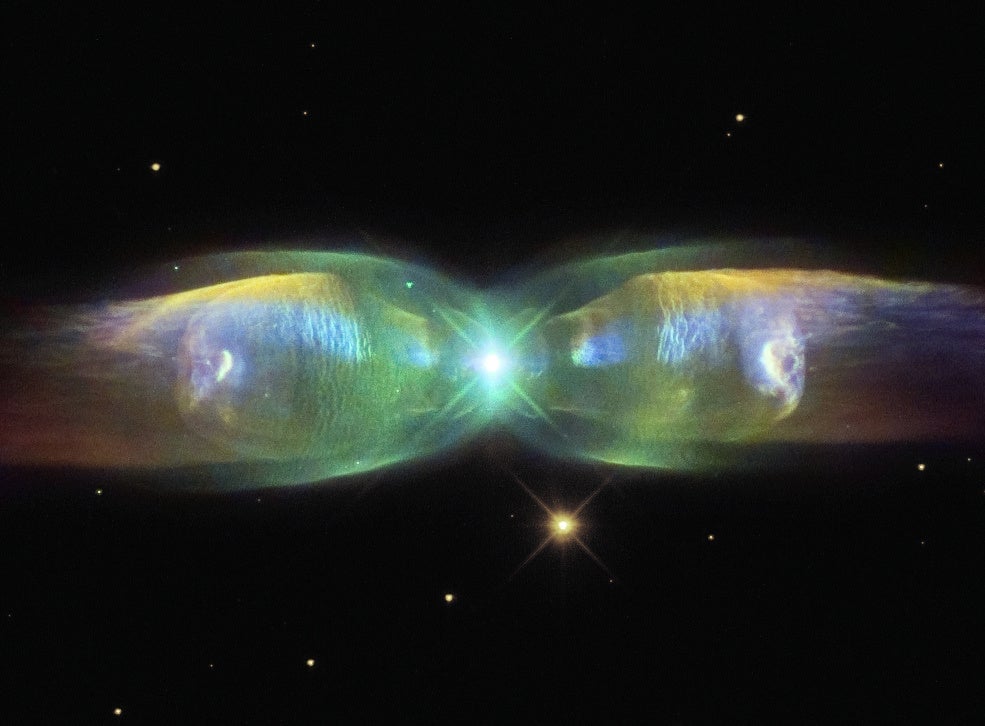
Jupiter – 588 million km
This picture—shot in April 2014—is a favorite because it does well to show that despite being the largest planet in the solar system, Jupiter’s also the least fully-formed. The fluidic bands of gases circulating at various latitudes bear testimony to that. For another, Hubble’s snap also shows the Great Red Spot—a violent storm larger than the Earth’s diameter that has been churning for at least 150 years—is shrinking.
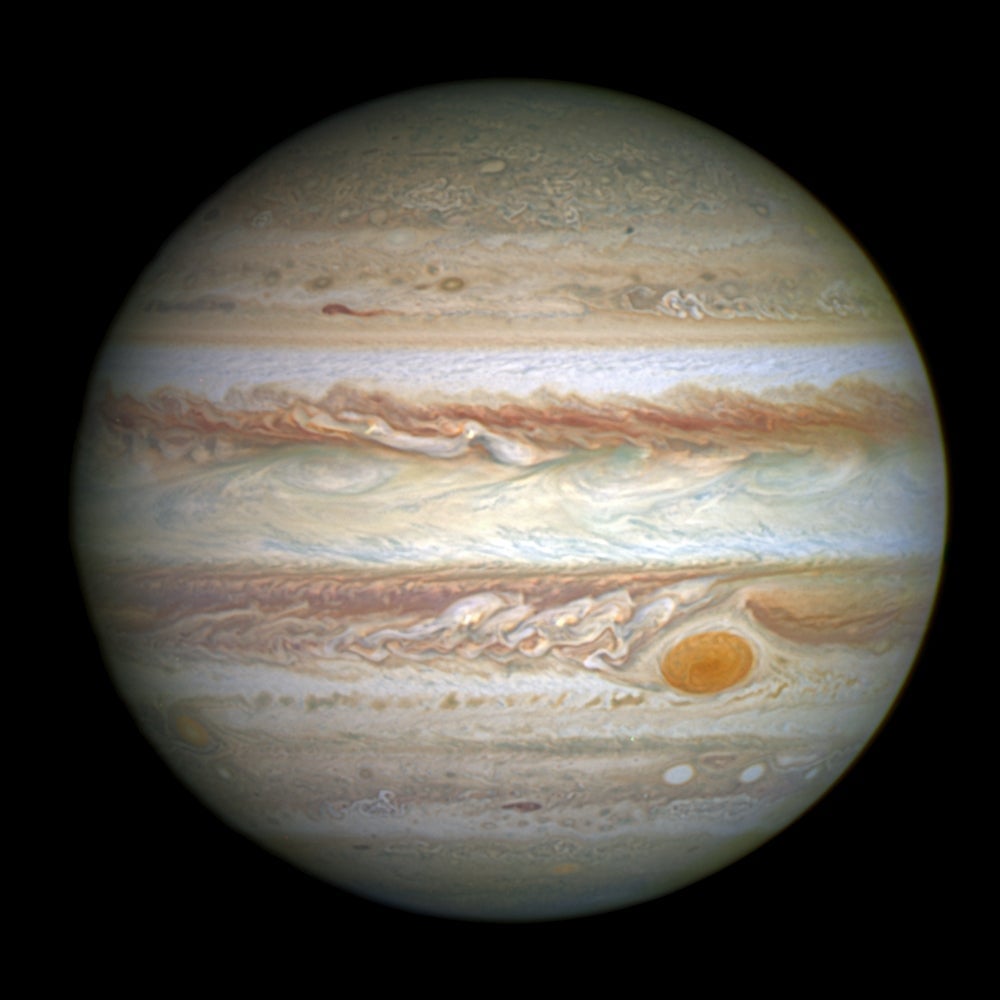
Messier 5 – 25,000 light-years
This is is a massive cluster of 100,000 stars, packed in a volume of space 165 light- years in diameter due to their own gravitation. It inhabits Milky Way’s halo; however, it is much older, hosting some stars that are more than 13 billion years old. M5 gets its name from being the fifth in a famous catalog of astronomical objects compiled by the French astronomer Charles Messier in 1771.
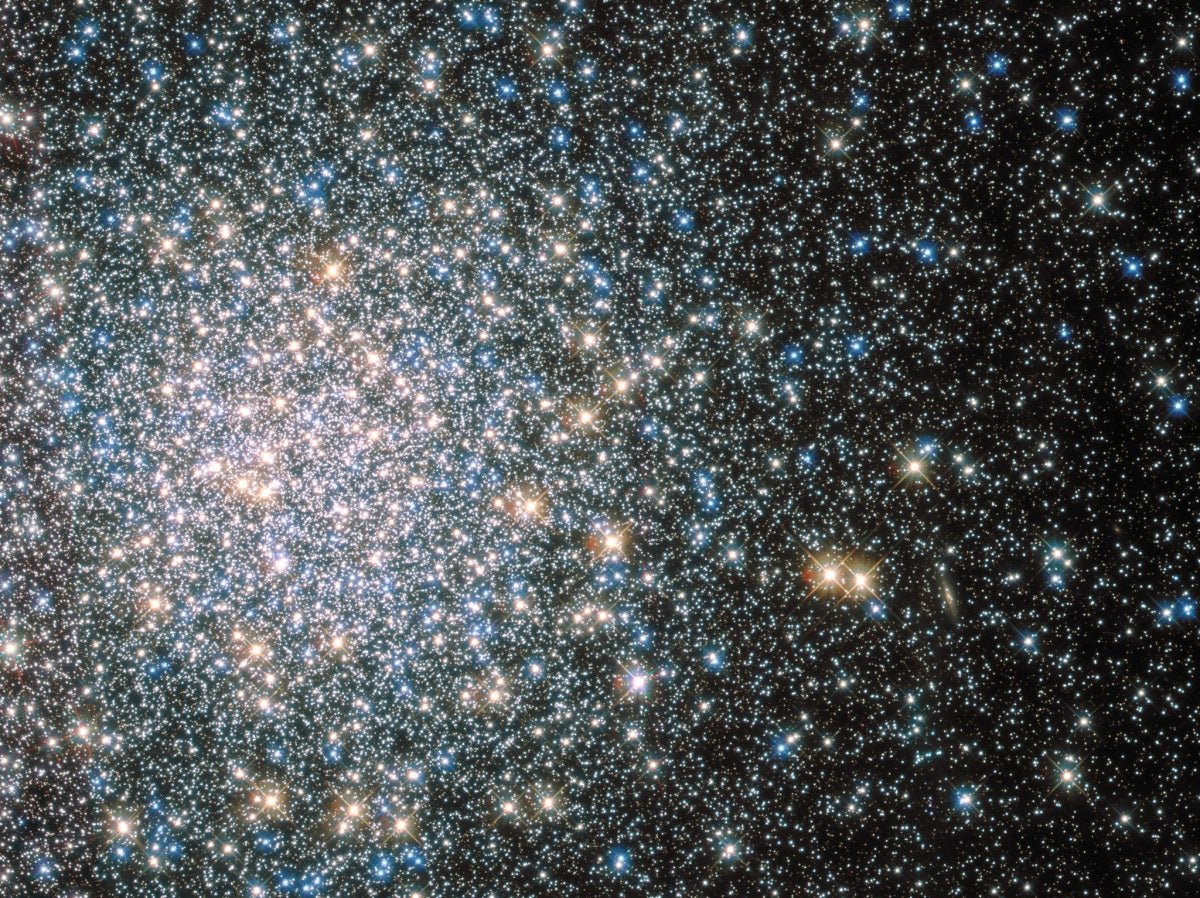
Orion Nebula – 1,500 light-years
This is a very large star-forming region not too far from Earth, its location best identified by the belt of three stars. The chaotic spread of gases and dust is sculpted by the birth of more than 700 stars at the moment, each in different stages of formation. The nebula itself is part of a much bigger gas cloud that includes the Horsehead Nebula. This view was snapped up by Hubble with some help from the ESO’s La Silla telescope.
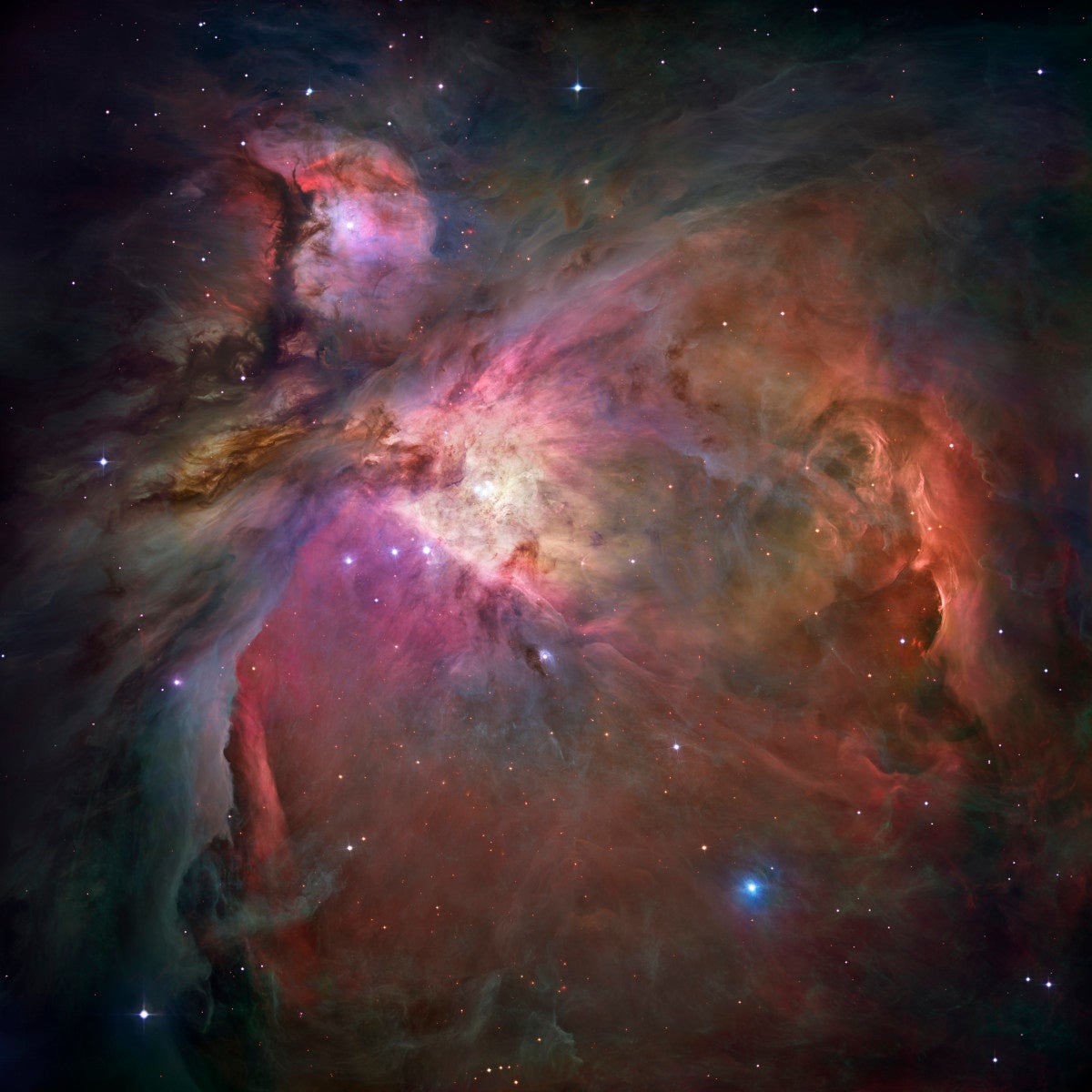
NGC 1672 – 60 million light-years
A spiral galaxy like the Milky Way, NGC 1672’s claim to fame is a Hubble image in which it throws up many features that have seldom been spotted at once, in exquisite detail. Tentacular lanes of dust are visible to the left; a dense bar of stars sits at the galaxy’s center; clumps of blue indicate hot star-forming regions; and a bright nucleus betrays the presence of a black hole.
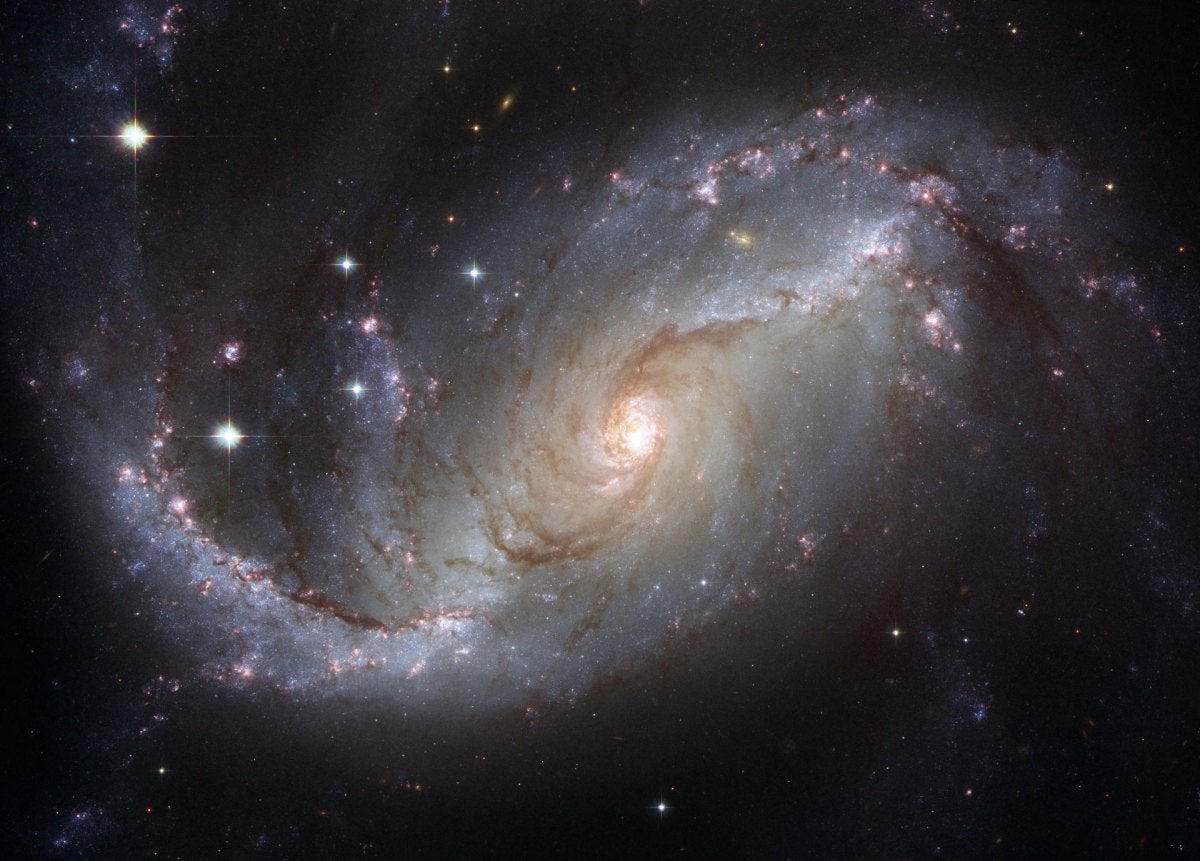
AM 0644-741 – 300 million light-years
This galaxy has an odd composition: a wide ring of stars, about 150,000 light-years in diameter, surrounding a highly condensed cloud of gas and dust, with a lot of space in between. Astronomers have reason to believe the shape is the result of a cosmic collision between two galaxies. When the smaller galaxy passed into the larger one, the incursion of all that mass provided a focal point at which the interstellar matter in the vicinity gathered.
